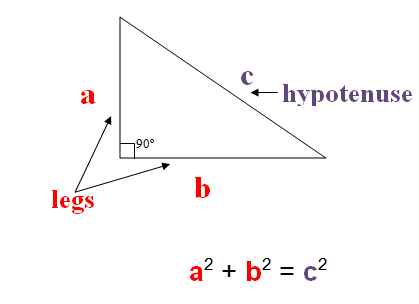How do you find the length of the missing side given a? b=24 c=40?
1 Answer
Jun 29, 2016
a = 32
Explanation:
To answer this problem, you should use the Pythagorean Theorem:

The hypotenuse (c=40) and one of the legs (b=24) are known, so all we have to do is solve for a. We can do that by plugging in our known values:
Thus,
-576 -576
You should end up with:
Next, take the square root of both sides to find a. The square root
(
Therefore, a = 32
You can check your answer by plugging a and b into the equation and solve for c to see if your answer matches the given value of c:

